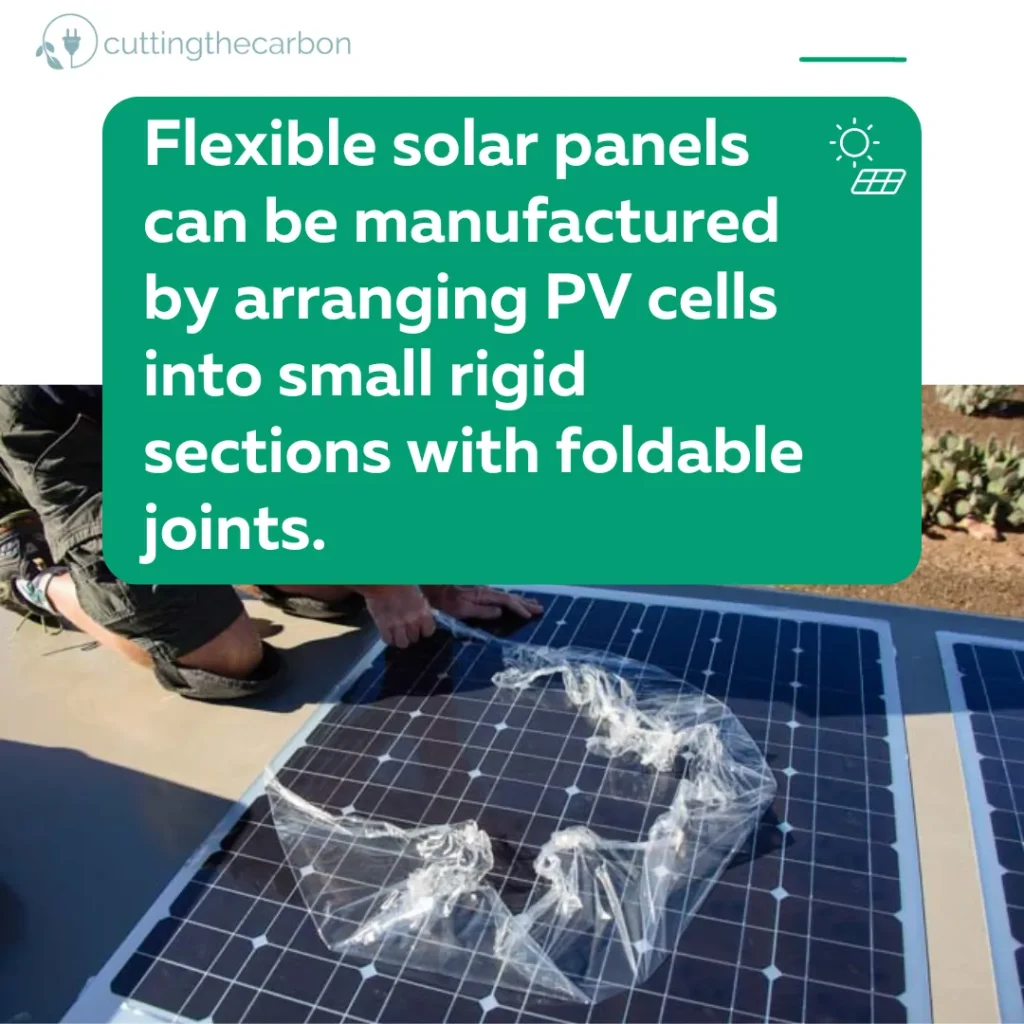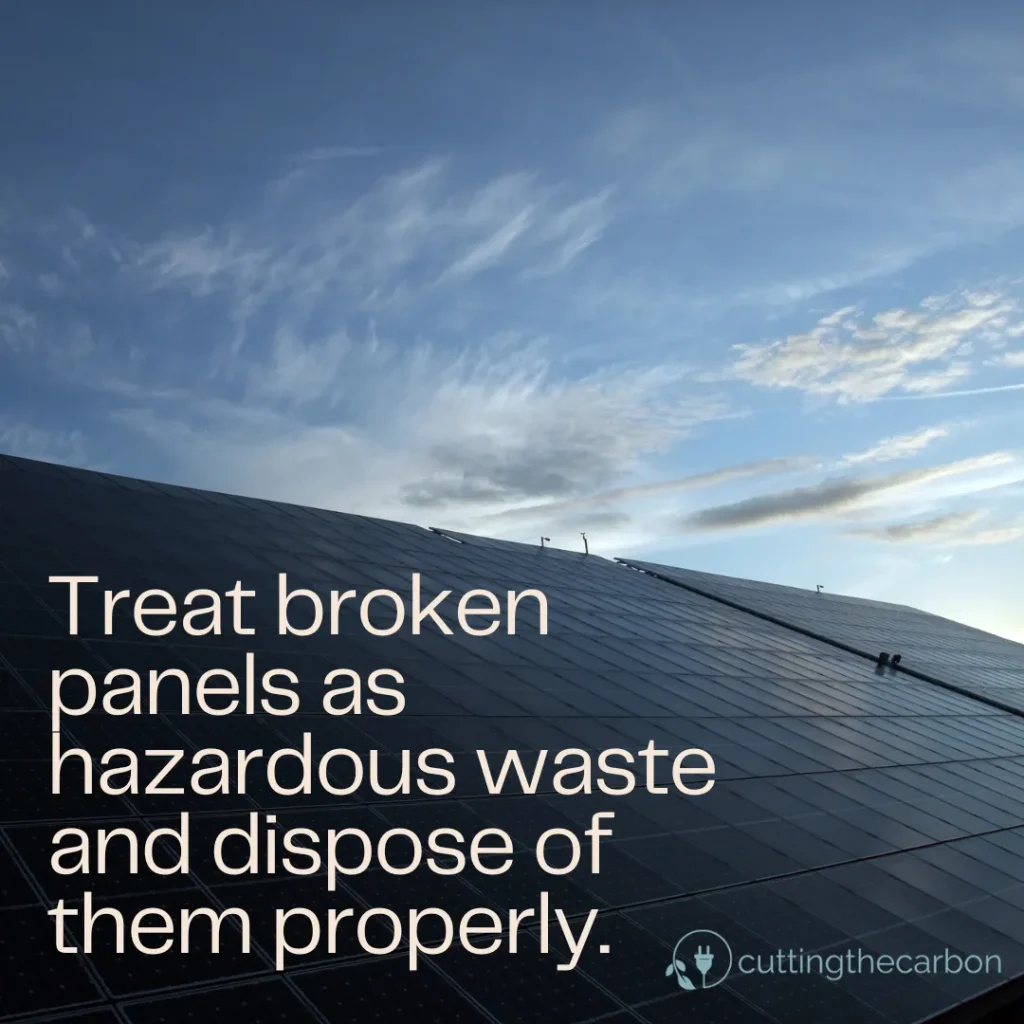Understanding the process of removing flexible solar panels requires considering various essential factors. These lightweight and adaptable energy sources have a unique structure which differs significantly from their rigid counterparts.
This guide will teach you about the role of adhesive backing in installations and why it’s crucial for maintaining the panel’s position. Furthermore, we will explore the essential tools required for this task, such as a rotation magnetic tip screwdriver set.
We’ll also cover step-by-step processes for safely disconnecting electrical connections and techniques for lifting corners without causing damage. We’ll then move on to the effective use of scraper tools during removal, emphasising handling methods and usage techniques.
Lastly, dealing with residual adhesives after panel removal can be tricky; hence we provide methods and precautions for cleaning up residues after dismounting. With these insights at your disposal, knowing how to remove flexible solar panels will no longer be an intimidating task.
Understanding the Structure of Flexible Solar Panels
Flexible solar panels are like the yoga masters of the solar world – they can bend and twist to fit almost any surface. Unlike their rigid counterparts, they don’t need frames or brackets to stay in place. Instead, they use adhesive backing to stick directly onto roofs, walls, or even backpacks.
Differences between standard and flexible solar panel structures
Standard solar panels are like the stiff upper lip of the solar world – rigid and inflexible. They need to be mounted on frames and secured with brackets, which can limit their placement options. Flexible solar panels, on the other hand, are made of thin layers of silicon cells deposited onto a plastic substrate. This makes them lightweight and bendable to conform to curved surfaces and fit in tight spaces.
The role of adhesive backing in flexible solar panel installations
The adhesive backing on flexible solar panels is like the glue that holds everything together. It eliminates the need for bulky mounting hardware and provides excellent wind resistance. However, removing these panels requires special care to avoid damaging the underlying material. Therefore, enlisting a specialist is advisable if you’re uncertain about the removal process.
- Note: Improper handling of flexible solar panels during removal could lead to potentially costly repairs later.
- If you’re interested in installing new solar panels, check out our comprehensive guide on DIY solar panel installations.
Flexible Vs Rigid Solar Panels – A Complete DIY Video Guide
Rigid solar panels are durable, weather-resistant, and adjustable for optimal solar gain, but they’re heavier and require roof penetration for installation. Conversely, flexible panels are lightweight, adaptable to various surfaces, and easier to install without drilling holes.
However, they’re less durable and more expensive. Your choice depends on your vehicle’s specifics, usage location, and budget. The Rigid vs Flexible Solar Panels video below will hopefully answer any questions on this subject.
Tools Needed to Remove Flexible Solar Panels
Removing flexible solar panels from your home? Ensure you have the appropriate equipment to make taking off your flexible solar panels simpler and safer.
Why You Need a Rotation Magnetic Tip Screwdriver Set
A regular screwdriver won’t cut it. Invest in a rotation magnetic tip screwdriver set for a secure grip and better control when unscrewing panel connections. This is especially useful for hard-to-reach areas or awkward angles.
Other Essential Tools for Removing Flexible Solar Panels
- Gloves: Protect your hands from electric shocks and adhesive residues with a good pair of gloves.
- Bent Scraper: Gently pry up corners and scrape off residual adhesives with a bent scraper.
- Ladder: Reach high panels safely with a sturdy ladder.
Don’t forget to keep some cleaning supplies nearby to wipe away dust or debris during the process.
Remember, safety comes first. If you’re unsure about anything related to removing your own flexible solar panel system, consult with professionals who specialise in green technology solutions like the Cuttingthecarbon team.
Here is a table summarising the issues and potential solutions related to Flexible Solar Panels:
| Problem | Description | Solution |
|---|---|---|
| Overheating | Flexible solar panels can struggle to dissipate heat away from the solar cells, leading to degradation and a shorter lifespan. | Use a thermally conductive layer between the surface and the solar panel, elevate the panels to increase airflow, or set up a ventilation system. |
| Efficiency | The efficiency rate of flexible solar panels is lower than that of crystalline solar panels due to the thin semiconductor film. | Increase the efficiency rate by setting up multiple individual flexible solar panels. |
| Durability and Lifespan | Flexible solar panels are prone to damage due to their thinness and flexibility. They also have a shorter lifespan compared to crystalline panels. | Handle the panels carefully to avoid unnecessary bending or folding. Regular maintenance and careful installation can also help extend their lifespan. |
| Toxicity | Some flexible solar panels are made with toxic materials like CIGS and CdTe, which can pose health risks and environmental damage. | Treat broken panels as hazardous waste and dispose of them properly through solar panel disposal organizations. |
| Delamination | Consider purchasing higher-quality flexible solar panels made with ETFE, a plastic more resistant to UV degradation. | Consider purchasing higher-quality flexible solar panels made with ETFE, a plastic more resistant to UV degradation. |

Step-by-Step Guide to Remove Flexible Solar Panels
Removing flexible solar panels is a delicate task that requires patience and attention.
Here’s a guide on how to do it without damaging the panels:
Safely Disconnect Electrical Connections
Before you start, switch off all power sources for safety. Employ a screwdriver to sever any electric cables associated with the board.
- Locate the junction box at the back of each panel.
- Unscrew and open the box.
- Identify the wires that connect directly to your home’s energy system.
- Gently pull out these wires from their respective terminals.
Techniques for Lifting Corners Without Damaging The Panel
Follow these steps to lift the corners of the panel without causing damage:
- Pick an easily accessible corner as a starting point.
- Use two hands when pulling upwards.
Consider wearing gloves to protect against potential cuts and scrapes. Safety first.
This methodical approach ensures minimal harm to yourself and your property.
Removing Flexible Solar Panels with a Bent Scraper
Removing flexible solar panels can be tricky, but fear not. The bent scraper is here to save the day. This simple yet powerful tool is essential for safely detaching these innovative energy solutions from your home’s exterior.
Benefits of Using a Bent Scraper
The curved edge of a bent scraper allows for precise control during operation, minimizing risk while maximizing efficiency. It enables you to get under the panel without causing any damage or leaving marks on your roof tiles or walls.
Usage Techniques
To use a bent scraper effectively:
- Slide the blade gently under one corner of the panel.
- Work around each side carefully without applying excessive force – remember, patience is key.
- Gradually lift up as you go along until whole sections start coming off easily.

Proper Handling Methods
Handling scraping tools properly is crucial for achieving desired results and ensuring safety throughout the process.
Here are some tips:
- Maintain a firm grip on the handle for better control over movements and prevent slips that could harm surfaces or cause injuries.
- Pull towards yourself rather than pushing away to reduce the chances of accidental slips that might lead to damage or personal injury.
- Regularly clean the blade after every few strokes to prevent accumulated adhesive residues from reducing the tool’s effectiveness and slowing down overall progress.
Explore our carbon footprint estimator tool, which offers a basic, behavior-based estimate of the CO2 emissions one person is responsible for over a one year period.
Removing Residual Adhesive After Solar Panel Removal
Removing solar panels is only half the battle. Residual adhesive left behind can be a sticky situation. Don’t worry – here’s a simple way to take care of the leftover adhesive.
Methods for Removing Residual Adhesive
The best way to remove adhesive residue is by using a bent scraper, the previously mentioned tool. This tool is designed to remove stubborn substances without causing damage to surrounding areas.
- Scrape Gently: Use the bent scraper to remove any remaining adhesive gently. Avoid applying too much pressure to prevent damage.
- Clean Up: Once all visible traces are removed, use a damp cloth and mild detergent solution to wipe down the area and remove any lingering stickiness.
- Dry Thoroughly: Ensure the area is completely dry before reinstallation or other treatments.
Note that for larger amounts of residue, it’s best to seek professional help from experienced solar panel maintenance and cleaning technicians.
Precautions When Cleaning Up Residue
Take your time to avoid damaging surrounding areas during the solar panel cleanup process. Avoid harsh chemicals like bleach or ammonia-based cleaners, which can erode roofing materials over time. Instead, opt for eco-friendly alternatives where possible.
- Safety First: Always wear appropriate safety gear, gloves, and eye protection when working with tools and chemical solutions. Never climb onto roofs without proper fall protection equipment.
With these tips, you can easily remove residual adhesive and keep your property looking its best.
Walking on Solar Panels?
While technically possible, walking on solar panels is generally discouraged due to potential safety risks and the likelihood of causing damage to the panels. Any damage incurred could void the warranty and negatively impact the efficiency and lifespan of the PV system.
FAQs About How to Remove Flexible Solar Panels
How to remove solar panels?
Disconnect the electrical connections and carefully lift off the solar panels using a scraper tool.
Can you remove solar panels yourself?
Hiring a professional to remove solar panels is recommended to avoid any damage or injury.
Can flexible solar panels be rolled up?
No, rolling up a flexible panel could damage the cells inside. They’re designed to bend slightly but should never be fully rolled.
Can you cut flexible solar panels?
It’s not recommended to cut flexible solar panels as it can damage the cells and affect their performance.
How To Remove Flexible Solar Panels Final Thoughts
Don’t ruin your flexible solar panels – remove them like a pro!
Before you start, ensure you have the right tools, like a rotation magnetic tip screwdriver set, to avoid any damage to the panels.
Disconnect the electrical connections safely and lift the corners carefully to avoid any harm to the panel.
Use an effective scraper tool to remove any residual adhesives after panel removal.
Follow these steps carefully, and you’ll be able to remove your flexible solar panels without any damage.

